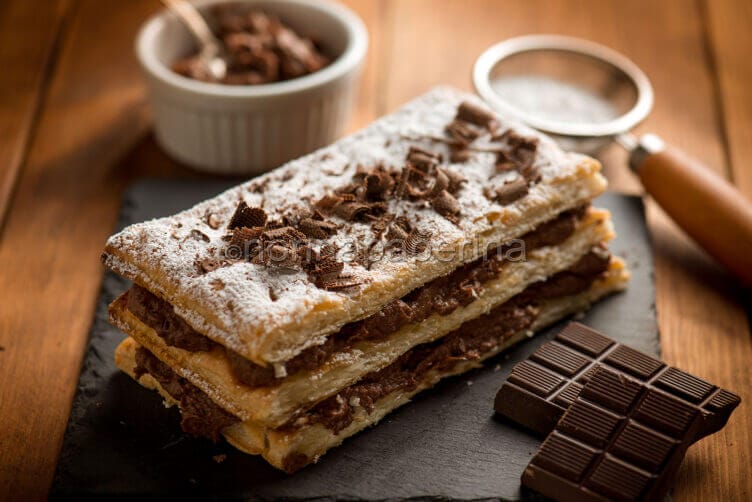
Lactose-free milk: which is the best and how to choose it

Lactose-free milk as a solution to intolerances
Lactose-free milk is the most practical solution to continue consuming milk despite lactose intolerance. This disorder is incredibly widespread; in fact, it is estimated that about a third of Italians suffer from it. It manifests itself with abdominal cramps and digestive disorders of varying severity, but even at the lower levels, it generates a lot of discomfort, which requires a change of diet.
This dietary adjustment occurs at the same time as either a significant reduction in milk intake or the use of lactose-free milk. Saying “lactose-free milk” is simple. In reality, there are several alternatives to milk, some of which belong to the category of “milk substitutes.” Others, however, are the result of a specific treatment applied to standard milk. This treatment intervenes in the presence of lactose and should not be confused with those that concern milk, such as skimming.
Skimming coincides with the elimination or reduction of the fat part. Milk is skimmed not only to increase its shelf life but also to make it less calorific. Just to give you an idea, whole non-skimmed milk contains about 60 kcal per 100 ml. Semi-skimmed milk contains 40–45 kcal, while totally skimmed milk does not go beyond 35 kcal. It must be said, however, that totally skimmed milk is rarely used, as it is almost completely devoid of flavor. How is milk skimmed? Milk sort of automatically leans towards skimming. Stated differently, it tends to highlight the mechanically removeable fat component, which is lighter than the water component. In an industrial setting, the process is sped up by heating milk to 55 degrees.
From the ministerial note: lactose-free. The word “non-dairy” has been eliminated, as it was previously associated with the word “dietetic.” The wording “lactose-free” can be used in its place for dairy products with a lactose content of less than 0.1 g per 100 g or ml. .
The term “naturally lactose-free” must apply to all items that do not include milk ingredients and meet the requirements outlined in Regulation (EU) 1169/2011, Article 7. In order to give each user the freedom to utilise the product from the preferred brand, we put “allowed or permitted.” I recommend that you always read the labels.
Recipe millefoglie con crema pasticcera
Preparation millefoglie con crema pasticcera
- To prepare the millefeuille with chocolate custard, start by heating a solution of lactose-free milk and cream in a saucepan.
- Pour the sugar, egg yolks, and starch into a bowl, then mix and whip everything together using a whisk (or a planetary mixer) until a soft consistency is achieved.
- Meanwhile, filter the cocoa powder with a sieve and pour it a little at a time into the mixture you just made to avoid lumps. Pour the enriched mixture into the saucepan together with the milk and cream.
- Light the flame and cook until you obtain a thick but fluid cream.
- Next, remove it from the fire and add the butter and the dark chocolate that had been previously melted in a bain-marie. The custard is ready!
- Now roll out the puff pastry and cut out three rectangles. Lightly prick the surface with a fork and brush a mixture of beaten egg yolk and milk on them.
- Finally, place the puff pastry in the fridge for 15 minutes.
- Once fifteen minutes have passed, take the puff pastry, dust it with icing sugar, and bake it for fifteen minutes at 200 degrees Celsius in a ventilated oven.
- After 10 minutes, the puff pastry may have acquired a golden hue, in which case lower the temperature to 180 degrees.
- The puff pastry must be golden and well caramelised at the end of cooking.
- Finally, take it out of the oven and let it cool.
- All that’s left to do is put the dessert together. But first, if there are any differences, be sure to adjust the shape until they are all the same.
- After that, alternate the puff pastry and the custard. The last layer must be a puff pastry.
- Finally, enrich it by dusting it with icing sugar and garnishing with chocolate curls.
Millefeuille ingredients:
- 1 roll of rectangular puff pastry,
- icing sugar,
- chocolate curls allowed
Chocolate custard ingredients:
- 5 lt. of full-cream milk,
- 50 gr. of fresh cream,
- 7 egg yolks,
- 20 gr. of corn starch,
- 180 gr. of sugar,
- 20 gr. of bitter cocoa,
- 70 gr. of 70% dark chocolate,
- 50 gr. of clarified butter
The two types of milk for lactose-intolerant people
lactose-free milk and vegetable milk. The first has been made lactose-free, while the second is naturally lactose-free. Furthermore, lactose-free milk is real milk, while vegetable milk is actually a drink obtained from other foods. This can replace standard milk both when consumed alone and in sweet and savoury preparations.
The differences between these two types of milk are important. The lactose-free one has a very similar flavour to its standard counterpart; after all, it is still milk. Vegetable milk, on the other hand, inherits its flavour from the basic ingredient. So coconut milk is different from almond milk, which is also different from soy milk, and so on. The beneficial and nutritional properties also change, although similarities can be found between the profiles of milk obtained from ingredients of the same family. For instance, all varieties of milk made from legumes are extremely high in protein, whereas milk made from dried fruit is high in healthy fats.
What is lactose-free milk?
What does lactose-free milk mean? It is worth examining the two categories of lactose-free milk individually: lactose-free and vegetable milk. What can we say about lactose-free milk? In reality, talking about lactose-free milk means talking about the process of removing lactose.Because of the widespread perception that it is a chemical process, the drink loses its authentic natural flavour. As it happens, the procedure is entirely natural and involves adding the lactase enzyme to the milk. This enzyme breaks down lactose; in fact, lactose-intolerant people either lack this enzyme entirely or have very little of it.
The lactase enzyme “digests” lactose even before it is consumed, breaking it down into glucose and galactose, two sugars that can be absorbed without any difficulty. In terms of flavour, almost nothing changes, also because lactose does not impact taste. The same goes for nutrition; in fact, lactose-free milk is as good and nutritious as standard milk. However, it is a little more expensive.
Considering how common this allergy is in young children, lactose-free milk is an essential diet. An allergy to milk or milk proteins should not be mistaken for lactose intolerance, which often manifests itself after a child’s first few years of life.
How is lactose-free milk made?
What does lactose-free milk mean? Lactose-free milk is obtained through a process that allows a significant reduction in lactose, making the drink digestible even for those who are intolerant. In my kitchen, lactose-free whole milk is always present! Highly digestible milk is also known as lactose-free milk or HD lactose-free milk, from the English term High Digestible.
The production techniques to obtain it are the following:
- Lactose hydrolysis: this is the most used method. In this process, through the action of some selected enzymes, the quantity of lactose is significantly reduced.
- Filtration method: thanks to membrane filters composed of almost imperceptible micro-holes, specific components of milk, such as lactose, can be isolated. In this way, the organoleptic characteristics are not altered.
From a nutritional point of view, several studies have shown that there is no difference between conventional milk and lactose-free milk. Indeed, with the hydrolysis of lactose, chemical compounds are formed that help the growth of intestinal microbial flora.

Vegetable milks and their properties
The discussion on lactose-free vegetable milk is very broad; in fact, there are many drinks that belong to this category, and they all differ in yield, flavour, and nutritional properties. As I have already stated, this type of drink can be classified into “families.” Here is a brief overview in this regard.
Vegetable milk made from fresh and dried fruit.
This subcategory includes coconut milk, almond milk, and hazelnut milk. The flavour is reminiscent of the basic ingredient, while the nutritional properties reveal a certain amount of vitamins and mineral salts. In the case of dried fruit, we also find beneficial fats, perhaps from the omega 3 and omega 6 series.
Vegetable milk made from legumes.
Under this category, we find soy milk, which is a must in terms of vegetable milk. It is also the one with the most complete nutritional profile and is closest to animal milk; in fact, it is rich in proteins and vitamin B and also contains calcium.
Milk from cereals. For example, rice milk, oat milk, and millet milk. The flavour is very full-bodied and quite sweet. The nutritional profile is dominated by carbohydrates, but there is no lack of mineral salts.
There are also types of milk from oil seeds that are characterised by the presence of beneficial fats, such as pseudo-cereals, which are characterised by a mix of carbohydrates and proteins. In this regard, I invite you to read the in-depth article on the types of vegetable milk.
Which should I choose—vegetable milk or lactose-free milk?
So, what should I choose between the two types of lactose-free milk? I’ll try to turn the question around: why choose? In fact, it is possible to consume one or the other type, perhaps alternating them according to your tastes and needs. However, if you really have to make a decision and establish which type of milk is in your diet, you will have to take into consideration some elements. First of all, your relationship with milk. If it is among your favourite basic foods and you are used to consuming it regularly, a diagnosis of lactose intolerance should push you towards consuming lactose-free milk. If you like to experiment, then focus on vegetable milk.
The choice of milk also depends on the effort you are willing to put in. Lactose-free milk is simply milk, while plant-based milk can be many things. The flavours are so varied that it requires a little experimentation before deciding which drink is right for you. Lactose-free milk brands are now available in any supermarket. Does lactose-free milk contain calcium? YES. Is lactose-free milk bad for your health? NO.
Lactose-free milk in cooking
Does lactose-free milk make you fat? NO. A similar discussion should be held when it comes to preparing desserts.You can use lactose-free milk just like regular milk—that is, you can swap it out completely without affecting the flavour. It’s important to consider how vegetable milk interacts with other components whenever using it. If you overlook this detail, you run the danger of causing unpleasant conflict. To demonstrate this dynamic, I present to you a moderately complex recipe, but one that can be made with lactose-free milk, namely the millefeuille with chocolate custard.
Although the recipe is made with lactose-free milk, you will notice that you cannot tell the difference, either in terms of flavour or texture. The recipe, I want to point out, is truly exquisite. Millefoglie with custard, after all, is loved by everyone. And the custard mentioned here is even flavoured with chocolate, or rather cocoa and dark chocolate. Now all you have to do is prepare it, have fun, and enjoy your meal!

How many egg yolks should be used for this millefeuille?
Another fundamental ingredient of the millefeuille with custard, whether classic or chocolate, is the egg yolk. The doubt that arises in these cases concerns the quantity. So, how many yolks from the eggs should I use? Should you make a mistake in any aspect, the cream may come out excessively thin or thick. Seven egg yolks are essentially needed for a medium-sized millefeuille, which is appropriate for the complete puff pastry roll.
The yolks, unlike the egg white, have very important nutritional properties, and they are not even that caloric. The yolk of an egg, in general, does not go beyond 60 kcal. For the rest, the yolk is rich in proteins, which make up 16%. Good levels of heart-healthy fats are also readily available. Regarding mineral salts, high levels of iron and phosphorus—which are beneficial for cognitive function—have been documented.
Do we have lactose-free recipes? Of course, we do!
COULD IT BE INTERESTING FOR YOU

Neapolitan snow buns, a delicious dessert
The filling, the soft core of the snow bun The mouthwatering combination of milk and ricotta cream at the centre of these Neapolitan snow buns is one of their most alluring features. This cream...

Raspberry puff pastry heart, a Valentine’s Day delight
A simple filling that gives out a lot Since the filling best embodies the essence of the raspberry puff pastry, it is worthwhile to discuss. Raspberries, icing sugar, cream, milk, and mascarpone are...

Vanillekipferl, traditional German tea biscuits
How did vanillekipferl biscuits come to be? Part of the history of vanillekipferl is unclear. On the other hand, it is believed that they originated in southern Germany in the 17th century. They...
























